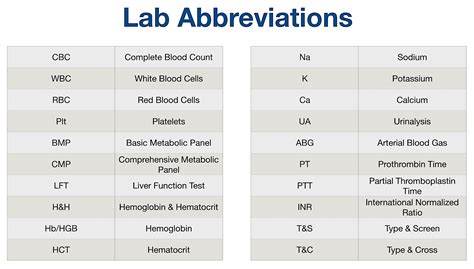Intro
Discover the Ua meaning in medical terms, including ureteral atresia, urticaria angioedema, and urologic conditions, to understand related symptoms, diagnosis, and treatments.
Understanding medical terminology is crucial for both healthcare professionals and patients alike. One term that is often encountered in medical contexts is "UA," which can have multiple meanings depending on the context in which it is used. In this article, we will delve into the various meanings of "UA" in medical terminology, exploring its significance, applications, and the importance of accurate interpretation in healthcare settings.
The abbreviation "UA" can stand for several things in the medical field, but one of its most common meanings is "Urinalysis." Urinalysis, or urine testing, is a diagnostic tool used to analyze a patient's urine sample. This test can provide valuable information about the patient's health, including the presence of infections, diseases, or other conditions that may affect the kidneys or urinary tract. Through urinalysis, healthcare providers can detect abnormalities such as blood in the urine, proteinuria (excess protein), glycosuria (excess glucose), or the presence of ketones, which can indicate conditions like diabetes or kidney disease.
Another significant meaning of "UA" in medical terminology is "Unstable Angina." Unstable angina is a condition where the blood flow to the heart is suddenly reduced, leading to chest pain or discomfort. This condition is a medical emergency that requires immediate attention, as it can be a precursor to a heart attack. The symptoms of unstable angina can vary but often include chest pain that is new, worsening, or different from previous angina attacks, pain that occurs at rest or with minimal exertion, or pain that lasts longer than expected. Healthcare providers diagnose unstable angina based on the patient's symptoms, medical history, and diagnostic tests such as electrocardiograms (ECGs) and blood tests.
Understanding Urinalysis (UA)

Urinalysis is a fundamental diagnostic tool that helps in the assessment of various conditions affecting the urinary system. It involves the physical, chemical, and microscopic examination of urine. The physical examination checks the color, clarity, and specific gravity of the urine. The chemical examination uses a dipstick to detect the presence of substances such as glucose, ketones, blood, protein, and nitrites. The microscopic examination involves looking at the urine under a microscope to identify elements like red and white blood cells, crystals, and casts.
Benefits of Urinalysis
The benefits of urinalysis are numerous. It is a non-invasive, cost-effective test that can provide immediate results, helping healthcare providers to diagnose and manage a wide range of conditions. For example, urinalysis can help in the early detection of urinary tract infections (UTIs), kidney diseases, and diabetes. It can also be used to monitor the progression of diseases and the effectiveness of treatments.Unstable Angina (UA): Causes and Symptoms

Unstable angina is caused by a reduction in blood flow to the heart, which is usually due to the narrowing or blockage of the coronary arteries. This narrowing is often a result of atherosclerosis, a condition where the arteries become hardened and narrowed due to the buildup of cholesterol and other substances. The symptoms of unstable angina can be similar to those of a heart attack but may be less severe. However, it is crucial to seek immediate medical attention if symptoms persist or worsen over time.
Treatment Options for Unstable Angina
The treatment of unstable angina aims to restore blood flow to the heart, reduce the risk of a heart attack, and alleviate symptoms. Treatment options may include medications such as antiplatelet agents, beta-blockers, and nitrates. In some cases, more invasive procedures like angioplasty or coronary artery bypass grafting (CABG) may be necessary to open up blocked arteries.Other Medical Meanings of UA

While "UA" commonly refers to urinalysis and unstable angina, it can also stand for other medical terms. For example, in the context of ophthalmology, "UA" might refer to "Uveitis Activity," indicating the level of inflammation in the uvea, the middle layer of the eye. In orthopedics, it could stand for "Ulnar Angle," a measurement used in the assessment of forearm fractures.
Importance of Accurate Interpretation
The accurate interpretation of medical abbreviations like "UA" is critical in healthcare settings. Misinterpretation can lead to incorrect diagnoses, inappropriate treatments, and adverse outcomes. Healthcare providers must be familiar with the various meanings of "UA" and consider the context in which it is used to ensure that patients receive the appropriate care.Practical Applications and Considerations

In practical terms, understanding the meanings of "UA" in medical contexts can significantly impact patient care. For instance, a urinalysis can guide the treatment of urinary tract infections, while recognizing the signs of unstable angina can lead to timely interventions that prevent heart attacks. Healthcare providers must be adept at interpreting medical terminology and applying this knowledge in real-world scenarios.
Statistical Data and Research
Research and statistical data play a crucial role in understanding the significance and applications of "UA" in medical contexts. Studies have shown that urinalysis can be an effective tool in the early detection of kidney diseases, with early intervention leading to better outcomes. Similarly, data on unstable angina highlights the importance of prompt medical attention, with timely treatment reducing the risk of heart attacks and improving survival rates.Conclusion and Future Directions

In conclusion, the term "UA" encompasses a range of important medical concepts, from urinalysis to unstable angina. Understanding these terms is vital for providing high-quality patient care and for advancing medical knowledge. As medical science continues to evolve, the importance of accurate interpretation and application of medical terminology will only continue to grow.
Final Thoughts
The journey to understanding and mastering medical terminology is ongoing. Healthcare providers, patients, and researchers must stay updated on the latest developments and meanings of terms like "UA" to ensure that medical care is delivered effectively and safely.What does UA stand for in medical terminology?
+UA can stand for several things in medical terminology, including Urinalysis and Unstable Angina.
What is the purpose of urinalysis?
+The purpose of urinalysis is to analyze a patient's urine for various substances and elements that can indicate health issues, such as infections, diseases, or conditions affecting the kidneys or urinary tract.
What are the symptoms of unstable angina?
+The symptoms of unstable angina include chest pain or discomfort that is new, worsening, or different from previous angina attacks, pain that occurs at rest or with minimal exertion, or pain that lasts longer than expected.
We hope this comprehensive overview of "UA" in medical terminology has been informative and helpful. Whether you are a healthcare professional seeking to deepen your understanding of medical concepts or a patient looking to navigate the complexities of medical care, knowledge is power. We invite you to share your thoughts, ask questions, or explore further resources to continue your journey in understanding the intricacies of medical science.
